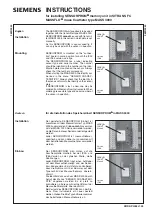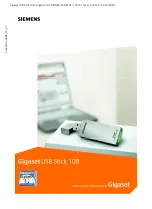
T
T
T
S
S
S
8
8
8
G
G
G
S
S
S
S
S
S
D
D
D
3
3
3
4
4
4
E
E
E
-
-
-
M
M
M
T
T
T
S
S
S
1
1
1
6
6
6
G
G
G
S
S
S
S
S
S
D
D
D
3
3
3
4
4
4
E
E
E
-
-
-
M
M
M
T
T
T
S
S
S
3
3
3
2
2
2
G
G
G
S
S
S
S
S
S
D
D
D
3
3
3
4
4
4
E
E
E
-
-
-
M
M
M
8GB~32GB ExpressCard34 SSD
Transcend Information Inc.
V1.0
5
Reliability
Wear-Leveling algorithm
The controller supports static/dynamic wear leveling. When the host writes data, the controller will find and use the block
with the lowest erase count among the free blocks. This is known as dynamic wear leveling. When the free blocks' erase
count is higher than the data blocks', it will activate the static wear leveling, replacing the not so frequently used user
blocks with the high erase count free blocks.
ECC algorithm
The controller use BCH8 ECC algorithm per 512 bytes. BCH8 can correct up to 8 random error bits within 512 data
bytes.
Bad-block management
When the flash encounters ECC failed, program fail or erase fail, the controller will mark the block as bad block to
prevent the used of this block and caused data lost later on.
Performance
Model P/N
Sequential Read
Sequential Write
TS8GSSD34E-M
34 MB/s
21 MB/s
TS16GSSD34E-M
34 MB/s
21 MB/s
TS32GSSD34E-M
35 MB/s
25 MB/s
Regulations
Compliance
CE, FCC and BSMI
























